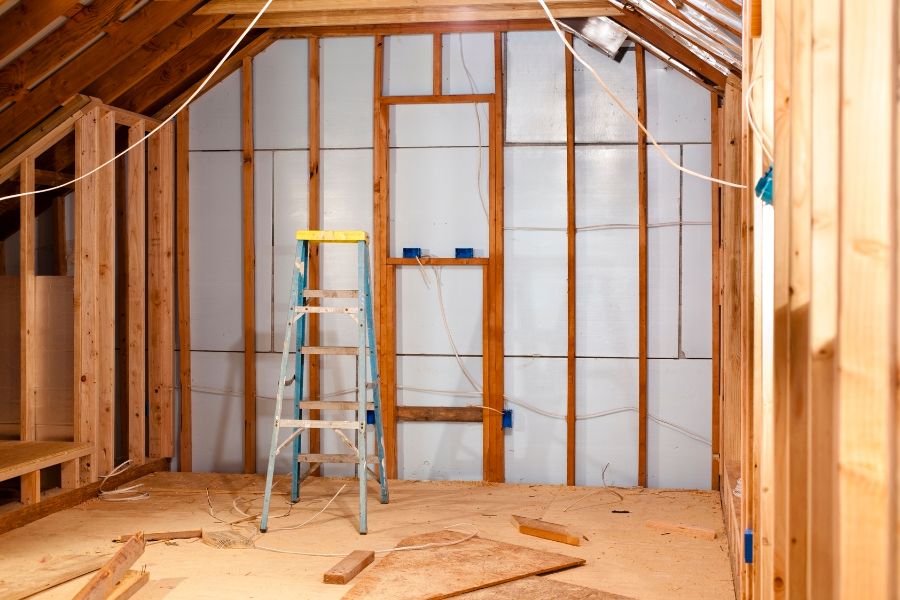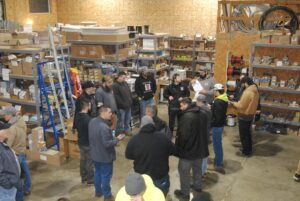
Ground-Fault Circuit Interrupters (GFIs) are the unsung heroes of electrical safety. These small but mighty devices safeguard homes by instantly cutting off power when they detect even the slightest current leak. This rapid response prevents electric shocks, reduces fire risks, and ensures your electrical system remains compliant with safety standards.
But what happens when your GFI outlets stop working? A faulty GFI leaves your home vulnerable to electrical hazards. Recognizing the warning signs and acting fast can mean the difference between a minor inconvenience and a serious safety incident. In this guide, we’ll explore common GFI problems, their causes, and how professional repair services restore your home’s electrical protection.
What Is a GFI and Why Does It Matter?
A Ground-Fault Circuit Interrupter (GFI) monitors the flow of electrical current through a circuit. If it detects an imbalance—like current leaking through water or a human body—it shuts off power in milliseconds.
How GFI Devices Work:
- Normal Operation: Current flows equally between the hot and neutral wires.
- Detection Phase: The GFI monitors for discrepancies as small as 5 milliamps.
- Interruption: When a leak is detected, the GFI cuts power instantly, preventing shocks and fires.
Fact:
The National Electrical Code (NEC) requires GFI outlets in kitchens, bathrooms, laundry rooms, garages, and outdoor areas.
Common GFI Problems and Their Causes
Like any electrical component, GFIs wear out over time. Moisture, dirt, and electrical surges can cause malfunctions, leaving you unprotected.
1. GFI Outlet Won’t Reset
- Symptoms: Outlet doesn’t restore power after pressing the reset button.
- Causes:
- Tripped circuit breaker.
- Internal GFI damage.
- Incorrect wiring or load imbalance.
- Repair Solution:
- Check the breaker and reset if necessary.
- Replace damaged GFI units.
- Verify wiring connections for proper load distribution.
2. GFI Outlet Trips Frequently
- Symptoms: GFI outlet turns off power repeatedly without an apparent cause.
- Causes:
- Ground faults from damaged wiring.
- Moisture or debris in the outlet.
- Overloaded circuits.
- Repair Solution:
- Dry and clean the outlet.
- Inspect wiring for damage and repair if needed.
- Reallocate appliances to balance the load.
Pro Tip:
Install weatherproof covers on outdoor outlets to prevent moisture-related trips.
3. No Power to GFI Outlet
- Symptoms: The outlet is unresponsive, with no power to connected devices.
- Causes:
- Tripped main breaker or upstream GFI.
- Faulty outlet wiring.
- Degraded internal components.
- Repair Solution:
- Reset upstream GFI outlets.
- Check and secure wire connections.
- Replace worn or damaged GFIs.
Insight:
In homes with multiple GFI outlets, one upstream unit can control several downstream outlets.
4. GFI Outlet Buzzing or Warm to Touch
- Symptoms: Audible buzzing noise or noticeable heat.
- Causes:
- Loose wiring.
- Internal component failure.
- Circuit overload.
- Repair Solution:
- Disconnect power immediately.
- Inspect and tighten wiring connections.
- Replace the outlet if damage is detected.
Safety Warning:
A warm GFI outlet indicates a potential fire hazard. Contact an electrician without delay.
5. GFI Outlet Exposed to Moisture
- Symptoms: Frequent tripping or corrosion around the outlet.
- Causes:
- Outdoor or bathroom outlets exposed to humidity.
- Improperly sealed outlet covers.
- Repair Solution:
- Install weatherproof covers.
- Replace corroded outlets and wiring.
- Apply sealant around wall openings.
The GFI Repair Process: Step-by-Step Overview
Professional electricians follow a systematic approach to repair GFI outlets, ensuring safety and code compliance. Here’s what the process typically involves:
🔍 1. Diagnostic Assessment
- Inspect the GFI outlet and connected wiring.
- Use a multimeter to check voltage and current flow.
2. Power Shutdown
- Turn off power at the main panel.
- Confirm deactivation with voltage testers.
3. Component Inspection
- Open the outlet to assess wiring connections.
- Check for moisture, corrosion, or physical damage.
4. Repair or Replacement
- Secure and reconnect loose wires.
- Replace damaged GFIs with UL-certified units.
5. Testing and Verification
- Restore power and test the GFI’s response using the built-in test/reset buttons.
- Verify downstream outlets for proper functionality.
Tip:
Test GFI outlets monthly to ensure continued protection.
Where Are GFIs Most Needed?
The NEC mandates GFI protection in areas prone to moisture, but proactive homeowners often extend this coverage for enhanced safety.
Key Locations for GFI Outlets:
- Bathrooms: Near sinks and tubs to prevent water-related shocks.
- Kitchens: Along countertops and near appliances.
- Garages and Workshops: Protects against tool-related hazards.
- Outdoor Spaces: Patios, decks, and pool areas require weatherproof GFIs.
- Basements and Crawl Spaces: Combat dampness and flooding risks.
Did You Know?
Water and electricity don’t mix—but even slight humidity can cause electrical malfunctions. GFI outlets are essential in moisture-prone areas.
The Importance of GFCI Protection for Pool and Spa Areas
Pools and hot tubs present unique electrical challenges due to constant moisture exposure. GFIs in these zones prevent potentially fatal ground-fault incidents.
Pool Area Requirements:
- Outlets within 20 feet of a pool must have GFCI protection.
- Pool pump motors and underwater lights require dedicated GFI circuits.
- Spa control panels and heaters must include GFCI breakers.
Fact:
The Consumer Product Safety Commission (CPSC) reports that GFI outlets have reduced residential electrocutions by 83% since their introduction.
Understanding the Difference: GFI vs. AFCI
Ground-Fault Interrupters (GFIs) and Arc-Fault Circuit Interrupters (AFCIs) both enhance electrical safety but serve distinct purposes.
🔍 GFI (Ground-Fault Interrupter):
- Protects against electrical shocks caused by current leaks.
- Monitors current balance between hot and neutral wires.
- Required in moisture-prone areas like kitchens and bathrooms.
🔥 AFCI (Arc-Fault Circuit Interrupter):
- Detects dangerous electrical arcs that may ignite fires.
- Responds to abnormal current patterns indicative of wiring damage.
- Required in bedrooms, living rooms, and other dry areas.
Insight:
Modern circuit breakers often combine GFI and AFCI functions for comprehensive protection.
Preventative Maintenance Tips for GFI Outlets
Regular maintenance extends the lifespan of GFI outlets and ensures reliable protection.
Maintenance Checklist:
- Monthly Testing:
- Press the “Test” button on each GFI outlet.
- Confirm power loss and successful reset.
- Moisture Control:
- Inspect outdoor outlets for water infiltration.
- Replace cracked or aged weatherproof covers.
- Visual Inspections:
- Check for discoloration or heat damage.
- Inspect wiring for corrosion, especially in older homes.
- Professional Inspection:
- Schedule annual assessments, particularly for pool or spa GFIs.
Pro Tip:
If a GFI repeatedly trips, avoid resetting it multiple times. Call a professional to identify the underlying cause.
The Dangers of Ignoring GFI Repairs
Delaying GFI repairs jeopardizes home safety and increases the likelihood of electrical incidents.
Potential Consequences:
- Electric Shock: GFIs protect against shocks by cutting power during ground faults.
- Electrical Fires: Faulty wiring and moisture create fire risks.
- Code Violations: Non-functional GFIs can lead to failed inspections and insurance issues.
Case Study:
A family in Florida experienced repeated shocks from a bathroom outlet. Upon inspection, electricians found a corroded, non-functional GFI that had been neglected for years. Replacing the unit eliminated the hazard immediately.
FAQ Section
1. How often should GFI outlets be tested?
Test outlets monthly by pressing the “Test” and “Reset” buttons to confirm functionality.
2. Why does my GFI outlet keep tripping?
Frequent trips often stem from moisture, wiring damage, or overloaded circuits.
3. Can I replace a GFI outlet myself?
While possible, hiring a licensed electrician ensures proper installation and code compliance.
4. Do all outdoor outlets need GFI protection?
Yes. Outdoor outlets must have GFI protection and weatherproof covers.
5. What’s the lifespan of a GFI outlet?
GFIs typically last 7–10 years with regular maintenance and testing.
Electrical safety isn’t optional—it’s essential. Faulty GFI outlets compromise your home’s defense against electric shocks, fires, and other hazards. Don’t wait until a minor issue becomes a major problem.
Our expert electricians provide fast, reliable GFI repair services that restore protection and peace of mind. From moisture-damaged outlets to persistent tripping problems, we handle it all with precision and professionalism.







